On Friday, May 2, 2025, numerous arts organizations nationwide received emails from the National Endowment for the Arts stating that their grants were rescinded or canceled directly after the administration called to eliminate the agency. Immediately after the emails were sent, the majority of senior officials resigned from the agency. The legality of these actions is questionable. Indeed, the American Civil Liberties Union is already working to challenge similar clawbacks and cancellations from the NEH. However, court challenges take time. The immediate effect on the artists and organizations affected is devastating. I reached out to Los Angeles dance companies and artists, who have weathered the pandemic, the SAG-AFTRA and Writers’ Guild strikes, and the recent catastrophic fires, giving them the opportunity to share their experiences, action plans, and what they need from the community to continue to create, contribute, and exist in this fraught era.
It is important to understand the multiple levels of funding affected by these cuts and clawbacks. These include the loss of the immediate grant, possible clawback or cancellation of state and local funding that rely on federal funds, and financial insecurity or lack of future funding. The governor is also looking to reverse the Performing Arts Equitable Payroll Fund Program, as those funds have been allocated but not distributed. This will be devastating to small theater and dance companies. Non-profit budgets are built out several years in advance, so the long-term financial wellness of many of these companies is uncertain at best, dire at worst. Many fear shutting their doors permanently. While it is possible to appeal (template linked here), it is questionable if those appeals will be heard or processed. After the cuts were announced, most senior staff officials quit. The director of dance, Sara Nash, and its two dance specialists, Kate Folson and Juliana Mascelli, are among those departing, leaving the NEA without a working dance division.
For this article, I sent the following questions to numerous Los Angeles-based dance artists, companies, and presenting organizations. All answers were taken over email and represent a minority of the losses in the community:
- Did you have Federal or State funding pulled or canceled due to these new restrictions and cuts?
- What programming is affected?
- Will you be able to continue your work?
- What do you need from the community?
- What actions are you taking to fight against these cuts?
- Share your feelings. What do you want people to know?
Grant writing is a long and complicated process, and applicants often work for months to ensure that their grant fulfills each and every criterion. Multi-disciplinary dance artist Sara Silkin lost a grant that she wrote, with several collaborators, for the Glorya Kaufman Performing Arts Center at Vista Del Mar. The process took over three months. The grant would have allowed for the continuation of the USC alumni choreographic residency program, with stipends for the choreographers and a salary for Ms. Silkin. As it stands now, her income is based on rentals. The grant would have given stability and opportunity to many young choreographers and expanded dance further into the West Side, while providing these emerging choreographers the rare opportunity to present work in a gorgeous 300-seat theater.
Invertigo Dance Theatre, founded by visionary Laura Karlin in 2007, is one of the region’s more established companies. In addition to groundbreaking contemporary dance, the company runs Dancing Through Parkinson’s, a community program that brings classes designed specifically to aid people living with Parkinson’s and other neurodegenerative, mobility, and age-related conditions through a unique sequencing of different forms of movement, music, and storytelling. Invertigo Dance Theatre’s Executive Director, Tara Aesquivel, relayed that they have lost both a NEA grant and a grant through the National Endowment for the Humanities for previously supported programming. They are adjusting their SOL program, their bi-annual summer solstice program scheduled for June 21, 2025, at the Stoneview Nature Center. Ms. Aesquivel has a call to arms:
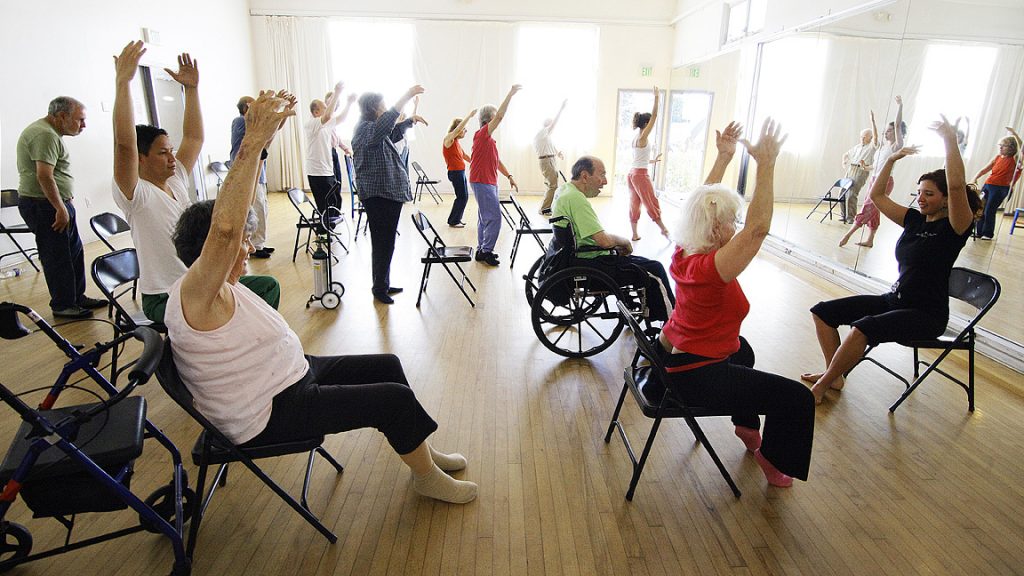
Invertigo Dance Theatre – Laura Karlin leading a Dancing Through Parkinson’s class – Courtesy of the company.
We have been through five years of “unprecedented times,” and our sector has yet to fully recover from the effects of the COVID pandemic. Many LA artists lost homes, community spaces, and invaluable personal property in the January fires. It has been a long, long road of setbacks. On top of that, more philanthropists and foundations continue to pull away from the arts in their funding priorities. It can feel demoralizing. But artists won’t give up. Art is how we get through, come together, and find joy or purpose when everything else seems dark. There are countless examples throughout history of the artist’s indelible role in times of crisis. We may be frustrated, disappointed, and tired, but we won’t give up. The way to move forward through these setbacks is together, in community, with creativity and persistence.
The theme of philanthropists pulling out of arts funding came up numerous times. Ms. Silkin also mentioned the difficulties of raising funds for a “philanthropist named” institution.
BODYTRAFFIC is another well-established Los Angeles dance company. Founded by Tina Finkelman Berkett and Lillian Barbeito in 2007, BODYTRAFFIC “draws on the creative spirit of its Los Angeles home to deliver performances that inspire a love of dance worldwide. The company champions contemporary dance, inspires audiences, and drives positive change. BODYTRAFFIC enriches the city’s cultural fabric through educational and community outreach programs, striving to get the world moving.” Tina Finkelman Berkett is the current Artistic Director. She confirmed that on May 2, 2025, BODYTRAFFIC
…received notice from the National Endowment for the Arts that they were withdrawing their recommendation for funding that had previously been offered to us.
The funding that was withdrawn was intended to support BODYTRAFFIC’s Spring 2025 touring season, including the company’s weeklong engagement in New York City, as well as the commissions of two new dance works, which will premiere during the 2025 season.
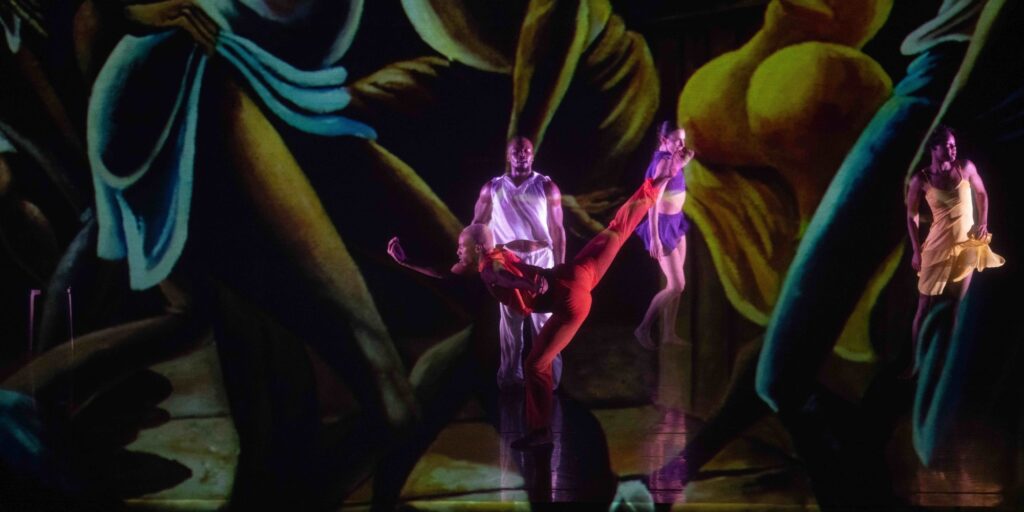
BODYTRAFFIC in “Incense Burning On A Saturday Morning: The Maestro” by Juel D. Lane – Photo by Guzmán Rosado.
While BODYTRAFFIC will be able to continue its work, without sustained support, our ability to create innovative new works and connect audiences with vital dance performances is at risk. We need our community now more than ever to help ensure that the arts not only continue but thrive.
Filmmaker Bridget Murnane has a historical perspective on this funding catastrophe. Though she did not have funds cut, future funding is uncertain or non-existent.
We can no longer plan new projects. It is horrible that funding is being taken away at this point. I made a film about Bella Lewitzky. She was blacklisted in the 1950s and in 1990 refused to sign the anti-obscenity oath as part of a NEA grant acceptance. She sued the NEA and won, and eventually got the grant, but it was too late. Ultimately, her company ended. Dance is always the art form that suffers the most in this country. After 1990, individual artist grants were no longer available; now it seems that art organizations will suffer the same fate.
LA Dance Project Director of Communications, Alice Mathis, points out the importance of these cuts to the future of LA Dance:
While L.A. Dance Project hasn’t had any grants directly rescinded, cuts to NEA funding are changing how we secure support. Regranting programs that have helped us have lost their NEA backing, setting off a ripple effect that is impacting our current season and likely future seasons.
We have a proposal pending with the NEA for our LAUNCH: LA program, a residency program aimed at supporting diverse, LA-based artists. However, given today’s political climate and the administration’s giving priorities, we have less confidence that this project will receive funding. Meanwhile, local donor resources have been stretched by the recent fires, making it even harder for arts organizations like ours to secure support.
Altogether, these challenges show why stable arts funding is more important than ever. We must do everything we can to support art, artists, and our creative communities, especially those in BIPOC, immigrant, people with disabilities, and LGBTQIA+ communities, who are being targeted in the current environment.
It is also important to look at the targeting of these cuts and the alleged priorities of the administration. According to multiple sources and as reported in the New York Times, the emails sent to artists said that the agency would “prioritize projects that “elevate” historically Black colleges and universities, and colleges that serve Hispanic students. The emails also said the endowment would focus on projects that “celebrate the 250th anniversary of American independence, foster A.I. competency, empower houses of worship to serve communities, assist with disaster recovery, foster skilled trade jobs, make America healthy again, support the military and veterans, support Tribal communities, make the District of Columbia safe and beautiful, and support the economic development of Asian American communities.”
Many artists have questioned that statement. Lily Tung Crystal, the Artistic Director of East West Players, commented on their $20,000 NEA grant termination.
The grant was to go to our production of the world premiere of Prince Gomolvilas’ “Paranormal Inside,” the sequel to his popular play “The Brothers Paranormal.” Prince is the only professionally produced Thai American playwright.
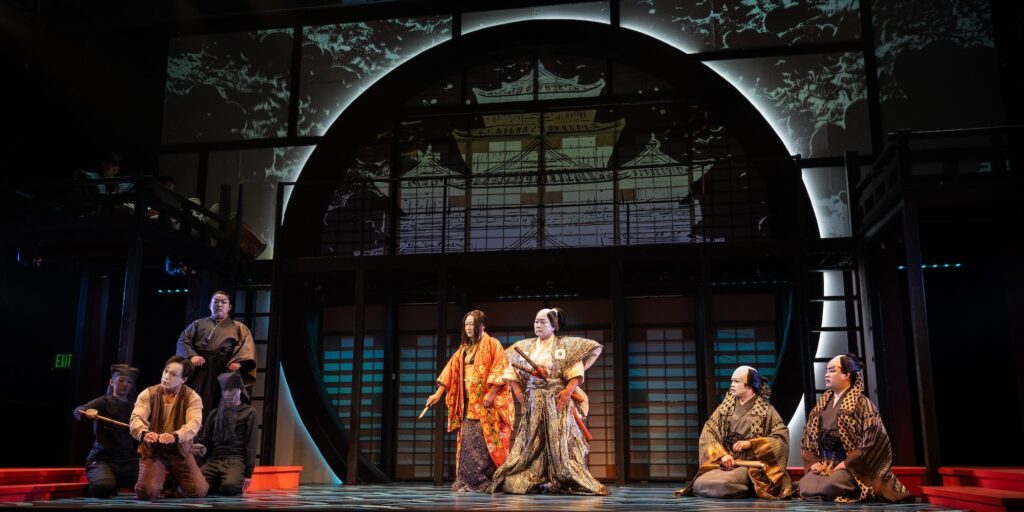
Gemma Pedersen, Adam Kaokept, Nina Kasuya, Kit DeZolt, Gedde Watanabe, Kerry K. Carnahan, Kavin Panmeechao, and Scott Keiji Takeda in Pacific Overtures at East West Players. Photo by Teolindo.
From East West Players’ official statement:
“Paranormal Inside” is a deeply American narrative that illuminates the layered reality of American identity by exploring the interwoven struggles of an immigrant Thai family and a displaced Black family. In terminating our funding, the administration concludes without explanation that this production does not align with any of their new priorities. To the contrary, this production falls squarely within the administration’s declared priority “to support the economic development of Asian American communities,” as it directly confronts the issue of Asian American economic and cultural development. Furthermore, East West Players plays a vital role in the economic and cultural life of Little Tokyo, one of the few remaining Japantowns in the country. Every cut to our program hurts the broader Little Tokyo community and the larger Los Angeles region.
It is not only companies and individual artists affected. Producing organizations are also affected. The Artistic and Executive Director of the BroadStage, Rob Bailis, commented on the effects of cuts on those entities.
BroadStage did not have an active project grant with NEA at the time the agency announced that existing grant commitments may not be fulfilled and would require further appeal and/or face cancellation. There is nothing fortunate about this situation, but we didn’t suffer that direct hit purely by virtue of timing.
For our entire community, it is often the independent, self-producing choreographers who have their own companies that fill our stages – they will be hit the hardest by these actions. It is important to remember that much of the dance work we see on LA’s stages is largely paid for by the choreographer and their company – getting the work created and getting it to the stage are a huge lift financially. That takes place before a presenter or a performing arts center enters the picture and presents the work on stage before a ticket-buying public. What a dance artist is paid to perform their work once it is on stage is a fraction of what it actually costs to make. Sources like the NEA are essential to having creative work in the pipeline to begin with, and it offers critical support to getting that work on stage. An action like this will actually show up in different ways over several years; the ripple effect on the ecosystem is huge, even if the cut is temporary.
Dance Data Project® Founder and President Elizabeth (Liza) Yntema highlights how this affects companies nationwide.
It is inescapable that the withdrawal of federal funding for the arts, including ‘claw backs’ of already distributed funds, hits hardest at smaller dance companies, who are, of course, much more likely to be helmed by women. [Dance Data Project® promotes gender equity in the dance industry, including but not limited to ballet companies, by providing metrics-based analysis.]
The unequal impact also affects the vital work of those creating in rural, less resourced communities, such as those in the Western States and the South. The “Bigs” will be fine. I worry much more about audiences and creators in places like Alabama or the Dakotas, where even small amounts of money can be transformative.
Within this landscape of fear is a real fighting spirit. Many companies, directors, and dancers vow to continue their work despite the obstacles. Mr. Bailis points out the interconnectedness of dance. When funding is challenged at any point in the process, the outcome is in danger.
Yes, we will continue, but this is quite compromising. As a presenting organization, we are dependent on finished work that is ready to put on stage, everything from a national tour to an LA-based company offering their home season. If these organizations cannot support the creation and administration of their work, we will all see a significant shift in what is available to share with our community.

Judith FLEX Helle – Choreographer, Artistic Director of Luminario Ballet – Photo courtesy of the artist.
Judith Flex Halle, the Artistic Director of Luminario Ballet, was straightforward.
We always continue. We will continue until we’re dead, we’ll never stop.
Luminario Ballet did not lose funding through these cuts but had grants pending. She has rewritten her proposals in order to comply with new restrictions on Diversity, Equity, Inclusion, and other forbidden words. She continued, sharing her action plan.
I am taking every commercial dance choreography and presenting opportunity I can grab and am hiring as many dancers as possible; I am cheering all my friends and colleagues along to keep their moods up and stoke their power and creativity; I am contributing to certain causes (Democratic party) and writing to my government officials.
Art brings in 10X the amount of money invested in it to the communities that support it.
Dancers must rally now and pull together to continue to create and present work to the public. FIND MONEY, share it. Hire each other. We need to help each other on as many platforms as we can. Think outside the box. You know, the usual!
All leaders echoed the need to find alternative funding sources, particularly through collective action. Mr. Bailis, in agreement with Ms. Yntema, discussed the importance of small donor impact on local companies.
We are fortunate to have a very generous community of arts patrons in LA. Now they will be called upon to do even more. Most donors know the value and impact of their giving to the larger organizations, and that must hold steady, but now it is critical to also find ways to get dollars directly to artists and to smaller companies. When your local performing arts center or producing theater starts an artist relief fund or offers patrons the opportunity to join a commissioning fund for an artist so we can keep those creative pipelines flowing, even small gifts will add up to ensure work makes it to the stage. We can never underestimate the power of collective action, particularly at times like these.
He continues, laying out the path forward.
While we continue the fight day in and day out alongside of our colleague organizations, as we are all trying to identify the legal pathways through our national service organizations and the courts to more enforceable policy outcomes, the work on the ground has to be about finding the ways to get resources to local and regional artists while a primary stream of their access to funding has just been shut off.
Ms. Aesquivel also emphasized the shared fight and need to work together while describing Invertigo’s action plan.
We are sharing resources for artists through our email and social media platforms, as well as sharing moments of artistry to remind everyone what we’re fighting for. We are also following guidance and updates from our professional associations, like Americans for the Arts, Californians for the Arts, and Dance/USA. We are contacting our elected officials to let them know how one of their constituent organizations has been affected by federal actions.
My final question for these leaders was open-ended. What do you want people to know?
Mr. Bailis:
We know the direct impact of the NEA grants on artists and companies who are now being told they may not be receiving their allocated funds is an awful situation. Let’s also be aware that direct-granting programs are only one portion of the NEA’s work. The NEA also allocates significant funds to the major regional service organizations, which also run their own substantial granting programs. The effect of a greatly reduced or re-oriented NEA will be felt far and wide and through more than just the channels we’re discussing today. Arts funding is an ecosystem of interlocking reliances. One really important issue for our dance community is that these cuts come amidst the equally troubling news that several of our major national foundations have determined to end their long standing support of the National Dance Project, which has been housed as a program of the New England Foundation for the Arts for many years (NEFA also being a regional of the NEA). As of next year, that program too is expected to twilight. These are among the core programs that support the creation and dissemination of new work in dance in the US. Without them, even for a year, pathways to creativity will be blocked and voices will be silenced. Local and regional sources will need to step up if we are to make it through until some resolution is reached about the future of the agency and the direction of national foundation funding as well.
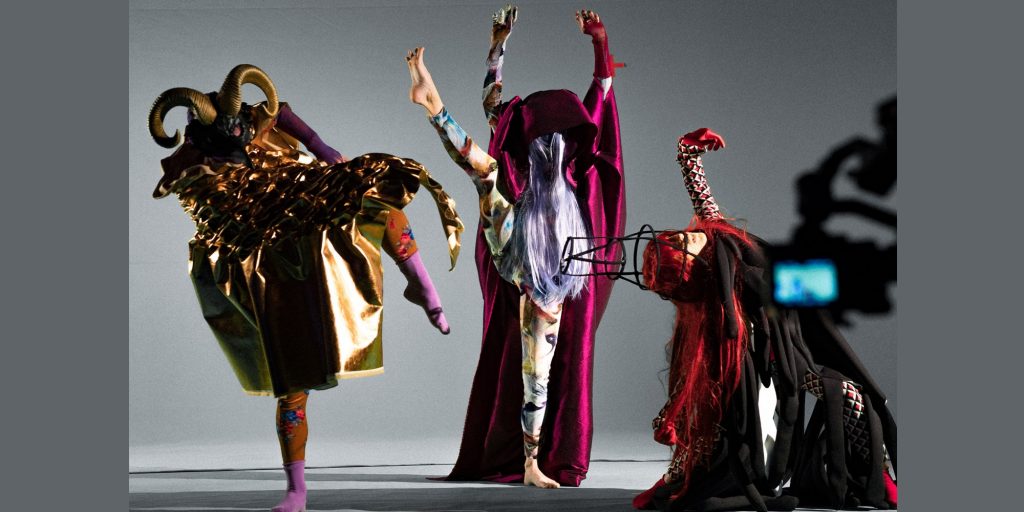
Los Angeles Contemporary Dance Company in FINDING MEEMOO – Directed by Jamila Glass – Photo by Zack Whitford
Ms. Aesquivel
We hope that artists of all ages and abilities will continue to practice and find joy in dance and the arts. Continue to practice your own artistry and support others in whatever ways you can – donate, volunteer, buy tickets, show up, and speak up to tell everyone who will listen that the arts are important.
Tina Finkelman Berkett
This defunding by the National Endowment for the Arts is disheartening and challenging. We are in solidarity with all artists and arts workers. BODYTRAFFIC intends to keep on dancing, despite challenges such as these.
Dance Entrepreneur Mackenzie Martin encourages the community to reassess the funding of dance entirely.
The recent decision to defund portions of the National Endowment for the Arts arrives at a moment when our industry is still recovering from a series of blows—COVID-19, inflation, union strikes, and even the devastation of natural disasters like the LA fires. While I may not be directly impacted by the loss of NEA funding, I’ve experienced enough as an artist, entrepreneur, and leader to know this: every challenge brings with it a call for reinvention.
For decades, grants and government support have served as critical lifelines for artists and arts organizations. But I believe this moment invites us to ask a powerful question: What if there’s another way forward? What if this challenge is an opportunity to evolve how we fund and value the creative sector?
I deeply believe that art holds profound societal value, and that value deserves equal financial reciprocity. As we navigate this moment, I want to encourage fellow artists to consider new models of sustainability. What would it look like to build programs that include revenue streams, business-minded strategies, and pathways to profitability, not just survival?
This isn’t about abandoning the systems that supported us, but rather about expanding our mindset. For too long, the arts have leaned heavily on donations, grants, and sponsorships to stay afloat. But those aren’t the only ways to create and thrive. Innovation often follows disruption, and perhaps this is the disruption that sparks a new era of artistic entrepreneurship.
I don’t claim to have all the answers. But here’s what I do know: artists are the most resourceful, imaginative, and capable individuals on the planet. By proxy of what we do, we’re always making something from nothing. Creation is our nature. Reinvention is our rhythm. Who better than artists to pioneer a more sustainable, more sovereign future for creativity?
Dance activist and educator Cynthia Dragoni leaves us with a strong message.
The loss of the NEA is more than a policy shift—it’s a step toward cultural silence and prolonged national shame.
When the government threatens to dismantle the National Endowment for the Arts, it doesn’t just withdraw funding—it withdraws (what little) faith in the idea that culture matters. For the dance world, this loss is seismic. The NEA serves as a lifeline for emerging choreographers, rural dance programs, and experimental work. Without it, entire ecosystems—regional companies, youth programs, community-based projects—begin to wither.
In the U.S., federal arts funding already pales in comparison to Europe, where cultural investment is seen not as a luxury but a necessity. To slash what little support we do have is to fall even further behind—not only in artistic innovation, but in the cultivation of shared national pride that we are a people who are educated, with beauty and an intellectual capacity to offer to the world.
Dance is wordless, yet speaks powerfully, as we have seen throughout history, to the dignity and cultural development of the country that presents it. Without the scaffolding of public investment, its voice risks going unheard and further sullies our reputation as a people.
Dance in Los Angeles is brilliant; a thriving community, industry, and lifestyle. The challenges to its funding and foundation are enormous, but not insurmountable. These passionate leaders are determined to bring dance forward, with or without government funding. The art that will be created and shared throughout the process will be revolutionary.
Resources:
The ACLU Nationwide
Dance/USA
Report Funding Cuts: Arts For LA
ArtsActionFund
Americans for the Arts Protect the NEA page
Written by Nancy Dobbs Owen for LA Dance Chronicle.
Featured image: Eight of the artists that were interviewed for this story. Collage built by LA Dance Chronicle from images courtesy of the artists.





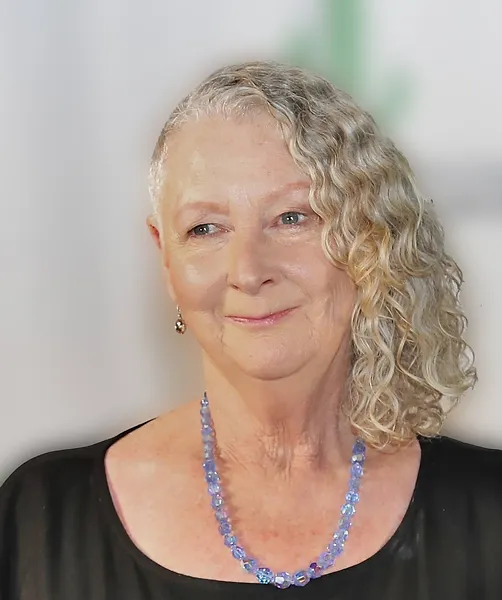

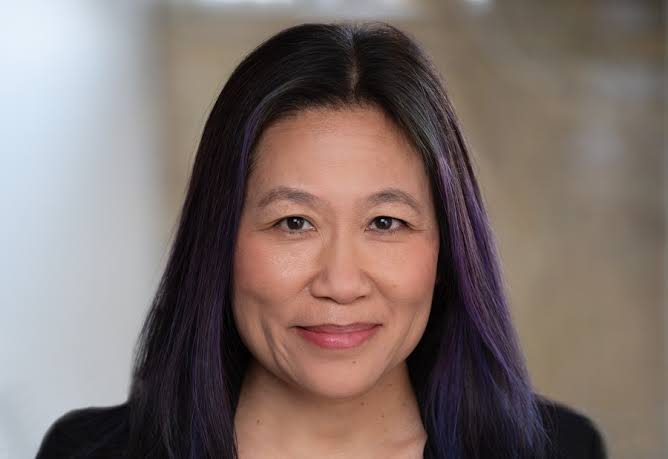
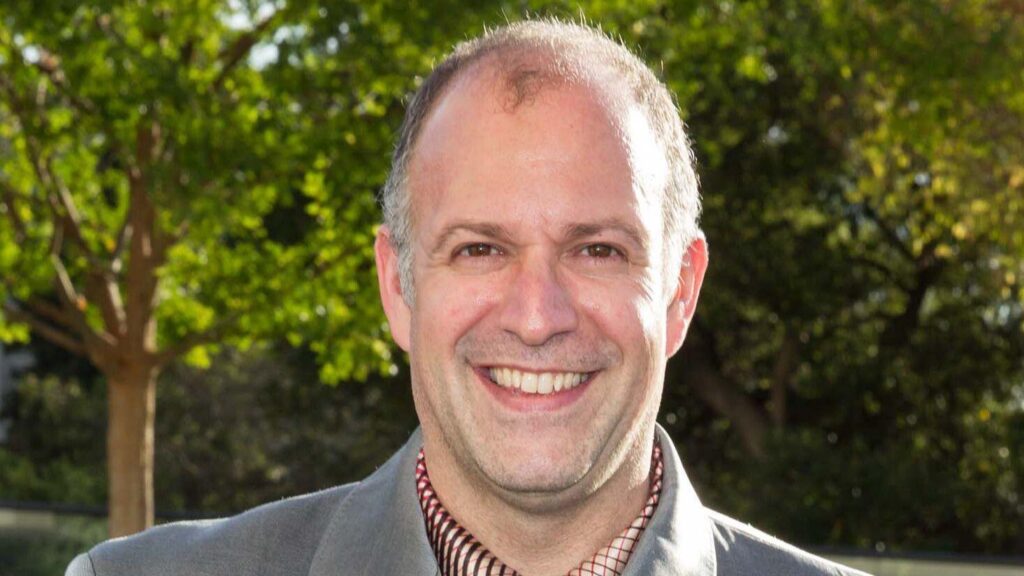

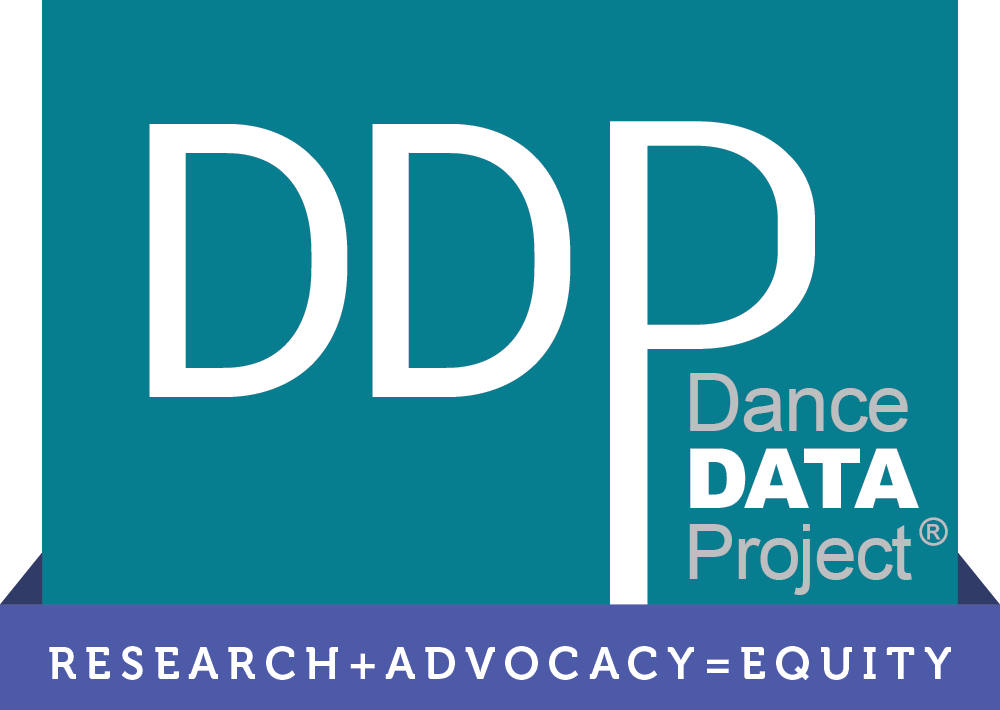
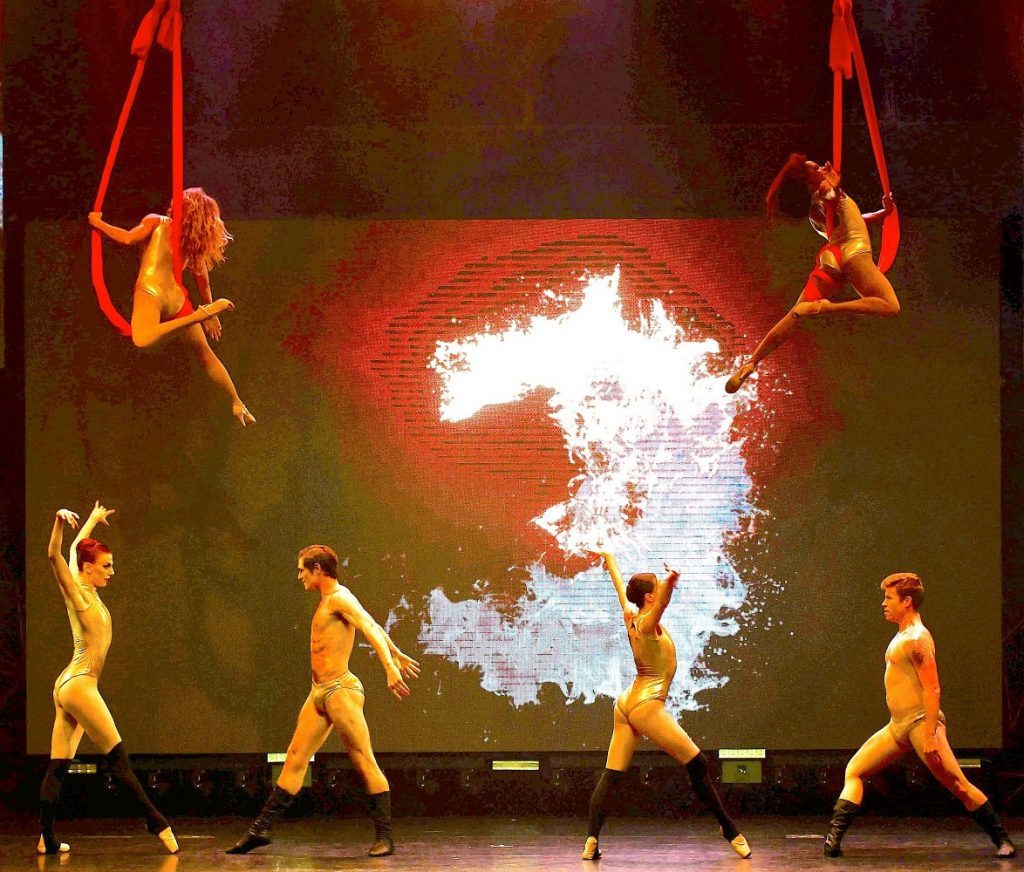
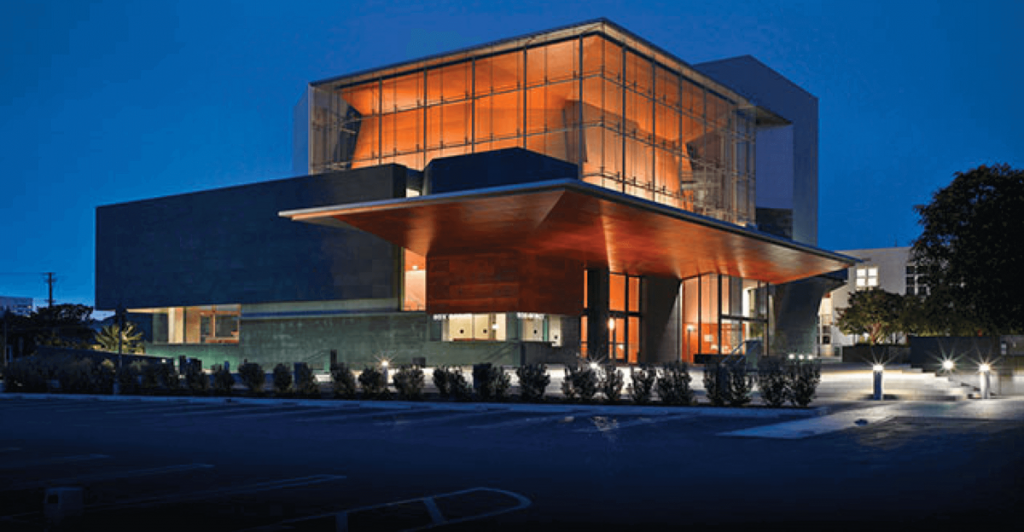


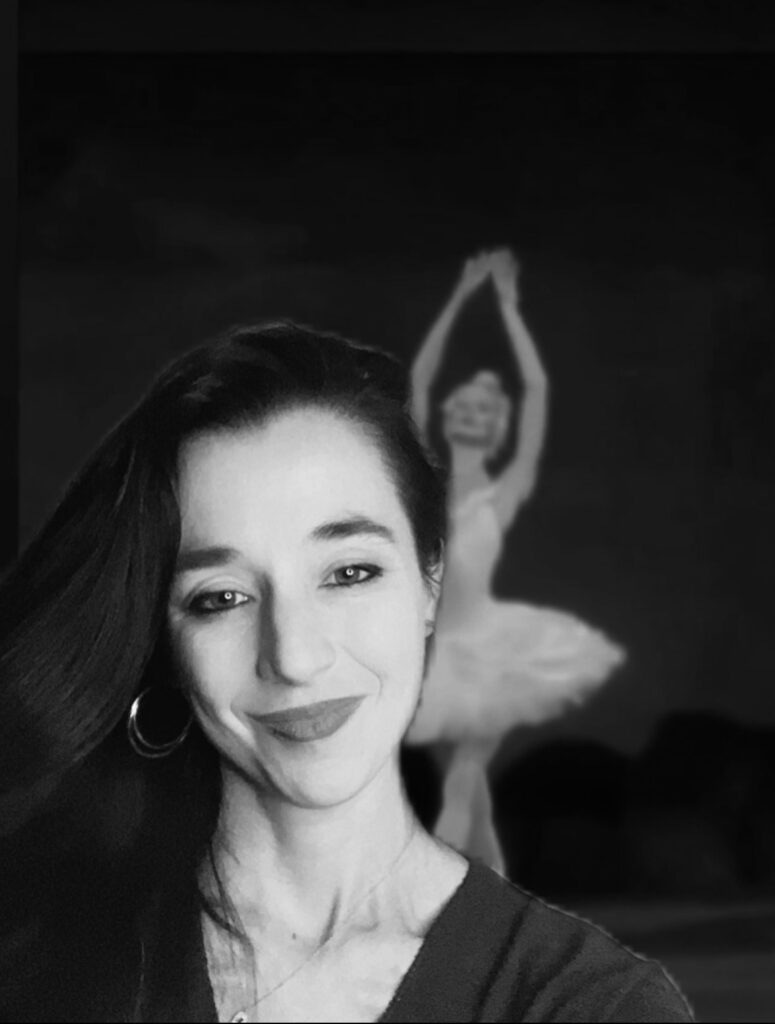
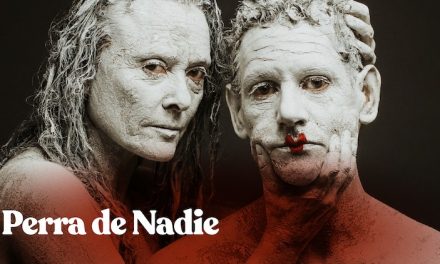
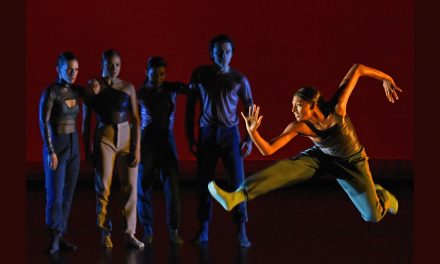
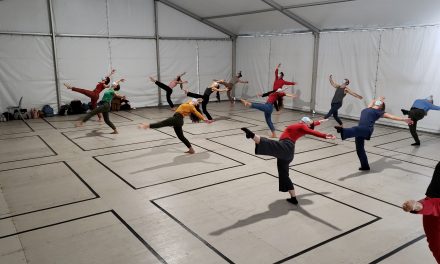



Thank you for this expansive article about dance at this crossroads. So very important!